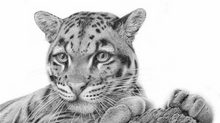Hunting cheetah
- Jon Isaacs
- Mar 18, 2024
- 4 min read
Updated: Mar 20, 2024
Of all the cats of Africa, my favourite is the cheetah. Although not the biggest of the African cats, it is the fastest. It is built entirely for speed, being lightly framed, having semi retractable claws which give it grip, a tail which provides balance and a spine which is incredibly flexible allowing it to turn even when running flat out. It also possesses a large heart and lungs which provide it with maximum amounts of oxygen and help to control its body temperature when sprinting. With numbers dropping from 100,000 to 7500 in a century, the species is in trouble and, when on safari, finding one is an event to be treasured.
In 2017 I was fortunate enough to return to the Mara in Kenya. The Maasai Mara has mixed habitat but much of it is open grassland and therefore ideal for cheetah. Within the grasslands there are areas where the grass is shorter and the ground flatter with fewer rocks. Often, framing it are areas of longer grass that a cheetah can use for initial cover before launching itself in order to try and catch its prey. Throw in a few eroded termite mounds that can be used as vantage points and you have a perfect cheetah killing ground. Usually a cheetah’s attack lasts less than a minute. If it hasn’t caught the prey by then it rapidly runs out of energy, overheats and pulls up. But when making the attack, it accelerates from 0 to 60 in three seconds, takes three strides a second and can cover seven metres in a stride. It is probably off the ground for half the attack and can take up to an hour to recover from the effort. Less than 50% of hunts are successful and even when successful, the cheetah often loses its prey to hyena, leopard, lion or vultures within minutes. It won’t stand and fight because, if injured, it would be unable to hunt and would soon die through lack of food or being killed by a heavier and stronger rival species.

I’d never seen a cheetah hunt and kill in full, but that trip was to provide me with my best sighting yet of a hunt and a morning witnessing compelling cheetah behaviour. Dusk was gathering by the time our guide managed to find the female cheetah and her two adolescent cubs that he knew resided in the area. All three were relaxing, sprawled out on the dusty ground, occasionally licking one another or shifting into a more comfortable position. Occasionally one would stand, peer into the distance and move position, before lying down again with a different vantage point to observe any game in the vicinity. All three were in good condition, with the mother only slightly larger and stronger looking than her two cubs. In the distance Thompson gazelle passed by in small groups and our guide seemed convinced that early the next morning she would be hunting them.
As the sun peeped over the horizon on a new day we were already out in the vehicle looking for her. Within twenty minutes we were back where we had left them but they’d gone. The guide picked up speed and quartered the area that was her chosen killing ground. Within five minutes we spotted her, accelerating into the distance. The hunt was on. We followed as quickly as the conditions allowed. Then braking suddenly our guide cut the engine. A cheetah’s chirrup could be heard drifting on the wind. From cover, the two adolescents ran past us. They had been summoned for breakfast. With gears engaged we were off in pursuit and within a couple of hundred yards we came upon her, gripping a Thompson’s windpipe as the life drained from it.
Having ensured it was dead, she moved wearily back from the carcass as the two youngsters fell upon it. Time was now of the essence. They would consume as much food as they could before the carrion eaters arrived and dispossessed them of their prey. The cubs started on the hindquarters and ate and ate, ensuring that the most nutritious organs were consumed first. After a few minutes the female had recovered sufficiently to join them and soon I was taking photos of all three, frantically consuming at different points of the carcass. I expected hyena or jackal to arrive at any minute or vultures gliding in to land almost on top of a carcass, but, for once, luck was on the cheetah’s side. The prize was to be all theirs!

For over twenty minutes their heads hardly rose from the body of the gazelle. They had separated the stomach which lay to one side of the carcass. All three had heads covered in blood and I thought that it made the cheetah look a much more ferocious cat than most pictures we see of it. Eventually, the female moved off, lay down and started to wash all the blood and gore from her body. One of the cubs grasped the largely eaten gazelle by the throat and pulled it under an acacia sapling whilst the other attempted to play tag with the carcass as it slid over the ground. They exhibited typical cheetah behaviour, ensuring the remains were hidden from prying eyes on the ground or from above. With stomachs bulging they then settled down for a half hearted wash close to their mother. Eventually, the family group stood up and wandered off in search of cover from the rapidly rising and strengthening sun. They’d had a successful hunt and could, for a time, relax until pangs of hunger forced them once more into explosive action.














































Comments